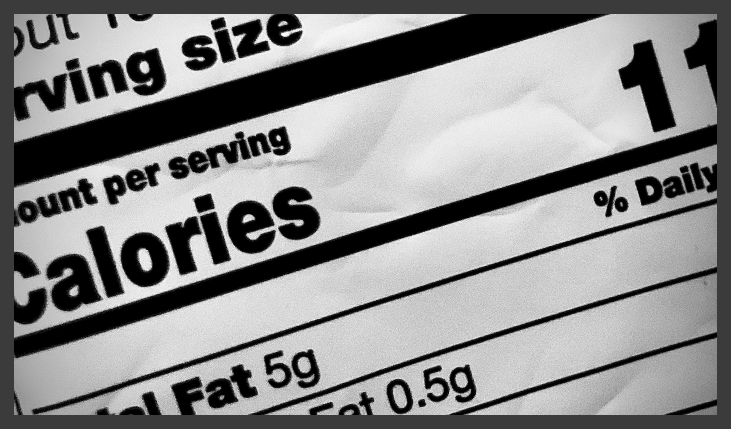Calories in versus calories out. You’ve heard this before, but if it truly is that simple, why do so many people struggle with weight? There are many factors to this. Let’s get started!
You may be saying “well okay, I’ve got it. How do I do that?” The science is simple, the human is complex. I am going to tell you what I have learned.
First let us form a basis of understanding calories. Calories are a unit of energy. Energy that is metabolized from the food that we eat. While all foods are labeled for one unit of “calories” they are not all nutritionally equivalent. We all instinctively know that a bag of potato chips is not the same as a bag of carrots. To completely understand calories we have to understand what they are and the other nutrients found in food. There are six macronutrients. There are three macronutrients we must understand to understand calories. Understanding these three nutrients on a chemical level is not the focus here today. All that you need to know is that all food is made up of carbohydrates (carbs), proteins, and fats. Each macronutrient has a unique metabolic effect, and even beyond that, there are differences between each depending on the source (carbs have the glycemic index, proteins have amino acid profiles, and fats vary in quality). What you should take away from this today if nothing else is that hunger, fatigue, and energy are all related to macronutrients.
Understanding how food interacts with your body is something that has to be learned, but I will give you the typical overview to start. Carbs are used as our primary source of energy. Carbohydrates on their own do not provide much satiation. Against intuition, carbs alone will usually increase appetite. This is where the glycemic index and blood sugar/insulin levels come into play. If you have never researched the glycemic index, I recommend you do so today. Next is protein. Protein requires more work to digest, so foods with higher amounts of protein tend to be more satiating. Because fats are calorie dense, higher fat foods tend to be more satiating. Fats are important nutrients, but because of their calorie density, they tend to be overconsumed.
I mentioned that there were six macronutrients. The other three are water, fiber, and cholesterol. Ignoring cholesterol for today, I want to emphasize the importance of water and fiber in diet. Neither water or fiber contribute calories to our body, but they both help to make food more satiating. Too many people underestimate the importance of both water and fiber, especially those on calorie restrictive diets. Have you ever wondered why an apple is so filling?–water and fiber.
I will not focus on micronutrients much here today. The focus today is calories. Honestly, my knowledge on micronutrients is limited. From my understanding, almost any diet with enough diversity will satisfy micronutrient requirements. In more severe cases, micronutrients can be supplemented (e.g. someone with anemia might take an iron supplement or someone on a restrictive diet might take a multivitamin). The one micronutrient to be aware of is sodium. High sodium is known to affect blood pressure and in severe cases, affect the kidneys. Salt is not something we should avoid but be mindful of in our processed food culture.
There are no shortcuts, only strategies. Ultimately there is no way to get around calories once they are ingested. If body composition is our focus, we must look at ways in which we can modify our intake or our output. I will give you the top three that have worked for me:
Intake
- Stick to a diet plan. This advice is intentionally vague. Being on a diet (any diet) for extended periods of time forces you to learn more about the foods you eat. On a diet a person can discover many things about how their body responds to food. Diets require us to take a moment and analyze what we eat and what we buy. Ultimately even if the diet is “unsuccessful” it will teach you something about your nutrition.
- Bad eating habits tend to be in response to some other stimulus. For me, I crave food as an activity to relieve boredom and as a destresser. The better that I can manage my time staying focused on tasks the less I eat. Also forming a daily routine has been a major help (sleep, diet, work, planned daily tasks, etc.).
- As we spoke about above, eating satiating foods is important. Finding alternatives to the foods you are trying to avoid or low calorie additions to the meals you are already eating can make a significant difference. I recommend trying to add more protein into your diet, just about any vegetable will be a great low calorie addition, and you can never go wrong with a fresh apple!
Output
- I am going to sound like a broken record, but once again, it is routine. Maybe you do not have the time to go to the gym multiple times a week, but even something as simple as committing to walking around your neighborhood twice a week can have profound effects. Remember, there is a great amount of psychology to health.
- Resistance training is so wonderful. It burns calories, It builds muscle (that will then burn more calories), it boosts our psychology, and improves our overall physical health. Win and a win and a win win!
- Make your life more active. One of the best ways to do this is to work in an environment that promotes movement. Do not limit yourself to your obligations though. Activity is not defined as work. Being active should be fun! Picking up a hobby, joining a local team, or volunteering in your community are all great ways to get out there!
Since I have more to say and little time this week, I am going to continue this conversation next week. Do me a favor: before you eat dinner tonight, look at a nutrition label. Just do it for me.
This has been Tristan from HQ! I appreciate you all! I’ll catch you next week!


